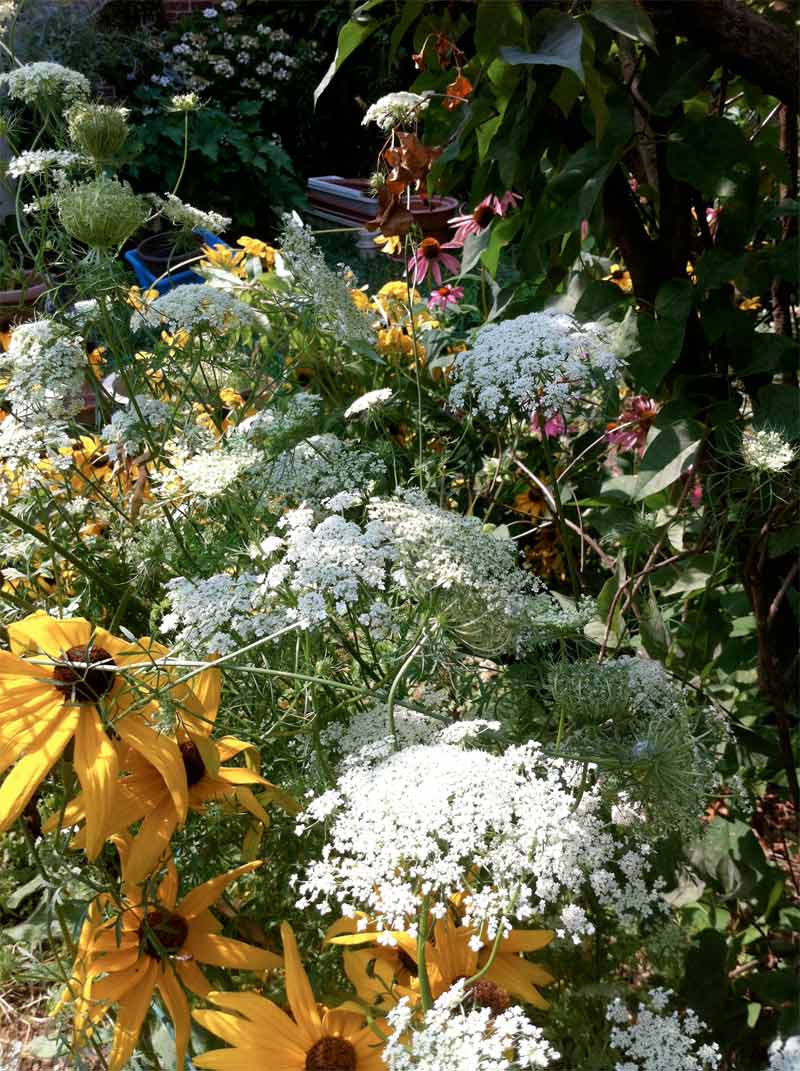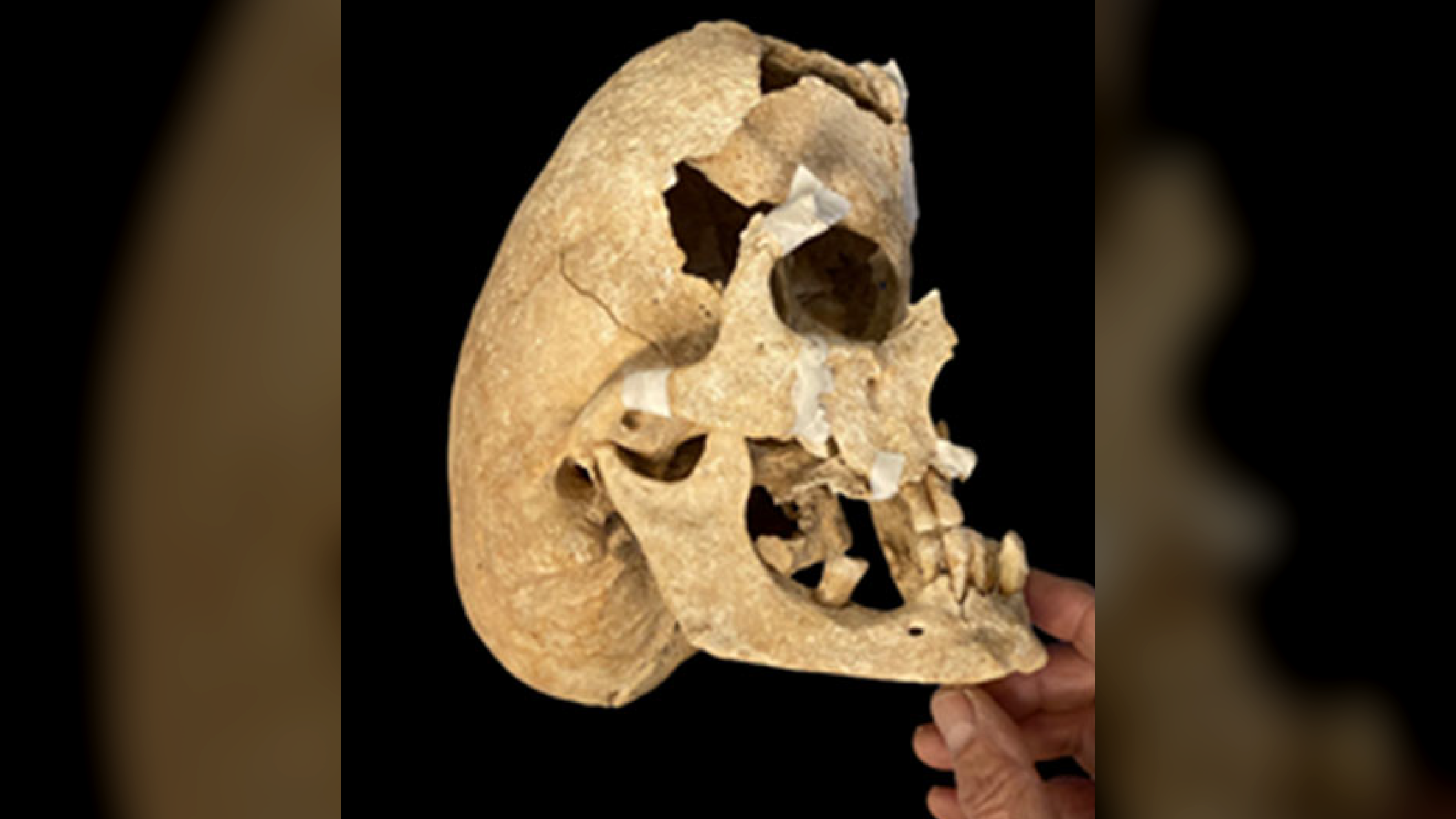
5 Garden Weeds You Can Eat!

Updated at 12:49 p.m. ET
Has the heat killed your garden and left nothing but weeds? Then why not eat those weeds?
Last year at this time we reported on five healthy weeds likely growing in or near your yard: dandelion, plantain, purslane, lamb's-quarters, and stinging nettles. Each one of these is a tasty powerhouse of nutrition. Raw purslane, a rich source of omega-3 fatty acids, offers a perfect tart punch to any smoothie; lamb's-quarters, one of the most nutritionally dense foods known, cooks in seconds in a stir-fry and has a nutty spinach taste.
The list of edible weeds doesn't stop there, though. Here are five more, as surprisingly tasty and nutritious as they are common, even in severe drought conditions. Just be aware of air and soil quality of where you harvest, along with any allergies you might have to similar-looking or tasting foods.
Burdock:
Burdock's claim to fame is that its burrs were the inspiration for Velcro. Get some on your socks, and you'll know why. But long before those purple flowers and troublesome burrs form, the plant has a long, thin root that is edible.
The infamous burrs don't appear until the second year of growth in this biennial plant. By midsummer during the first year, you can identify the plant by its display of massive dark-green leaves fairly low to the ground. The brown taproot can be up to 2 feet long. That's a lot of fine eating. You'll need a shovel to get this out. Don't be surprised if you pull and get only a couple inches' worth. This is a true weed that doesn't surrender easily. (The taproot helps it survive the drought.)
Get the world’s most fascinating discoveries delivered straight to your inbox.
Burdock roots are edible raw, but this might be quite a chew. You can slow roast them like parsnips or chop and toss them into soups. Burdock is the wild version of the cultivated Japanese vegetable gobo, which can grow 3 to 4 feet long. It is rich in inulin and many trace minerals, such as manganese and magnesium. [7 Perfect Survival Foods]
Daylily:
Here's a neighbor's flower you don't have to pick in secret, especially if you kindly wait until the end of the day. As the name almost implies, daylilies bloom only for a day. Then the blossom falls off.
That blossom is sweet and rich in vitamin A. You can eat them raw in a salad, lightly batter and pan-fry them, or dry them for long-term storage (sold as "golden needles" in Asian supermarkets). Come fall, the plant's white tubers underground also are edible. You'll have to get your neighbor's permission, this time.
The only caution here is that you should be sure you have an original wild daylily — the orange Hemerocallis fulva or the yellow H. lilioasphodelus (look them up) — and not a true lily, which is usually toxic. [10 Most Common Poisonous Plants]
Queen Anne's Lace:
Also known as the wild carrot, Queen Anne's lace is in full bloom across much of "temperate" North America, Europe and Asia right now. The white flower head is edible raw or lightly battered and fried. The seeds work well in soups and stews and can flavor tea, too.
If you catch these plants early enough, you can eat the roots and leaves. These are indeed wild carrots, the ancestor of all cultivated carrots. By the time the flower appears, though, the root is too woody to eat.
A few words of caution: Hippocrates prescribed the crush seeds as a form of birth control more than 2,000 years ago, and modern studies find some truth in the fact that the seeds and flower heads should be avoided by women pregnant or hoping to conceive. Also, to the untrained eye, Queen Anne's lace looks a little like poisonous hemlock, which will kill you in an hour if consumed. The latter has a hairless stem and doesn't smell like carrots. (I don't know what it tastes like.)
Mare's Tail:
This vigorous crack-dweller has a dozen names, a sure sign that most people consider it unsightly and invasive. It is one of those "oh, so that's what it is" kind of weeds. Also known as horseweed and, more properly, Conyza canadensis, the mare's tail is prolific in both rural and urban settings and will grow with hardly any water or soil straight and tall, up to 4 feet high. Again, that's a lot of food.
The leaves are most palatable when young. By midsummer, only the top foot or so of a 3-foot plant is tender enough to eat after a quick boil. They are peppery and, in fact, you can dry them as a spice. As with many dark, leafy greens, the plant is a decent source of calcium, potassium and other minerals.
And now for some Boy Scout trivia: Mare's tail is the weed of choice for making a fire via the drill-friction method. The very straight, hard stem rotates perfectly between the hands to make heat. What other plant can make the fire needed to cook it?
Perilla:
A prized herb called shiso in Japan, perilla is yanked from backyards with resentment by many a Western gardener. Pity. This green- or red-leaf plant has a unique taste that is a cross between mint and fennel, is very high in vitamins A and C and sundry minerals, and can boost the immune system. The red-leaf version is sometimes called beefsteak.
Most agricultural websites treat perilla as an invasive weed, and for good reason. It is mildly toxic to horses and cattle, and farmers don't want it on their pastures. Some gardeners are slowly warming to the red variety, though, because the vibrant leaves can add deep color to the garden when other plants start turning brown.
This nascent love of perilla's aesthetics will benefit weed-eaters everywhere, because a single perilla plant will produce thousands of seeds, ensuring that those tasty leaves will appear throughout the neighborhood, should you know what to look for.
Christopher Wanjek is the author of a new science novel, "Hey, Einstein!", a comical nature-versus-nurture tale about raising clones of Albert Einstein in less-than-ideal settings. His column, Bad Medicine, appears regularly on LiveScience.
Editor's Note: This article has been updated to correct a statement saying that Burdock contains insulin; it actually contains "inulin."

Christopher Wanjek is a Live Science contributor and a health and science writer. He is the author of three science books: Spacefarers (2020), Food at Work (2005) and Bad Medicine (2003). His "Food at Work" book and project, concerning workers' health, safety and productivity, was commissioned by the U.N.'s International Labor Organization. For Live Science, Christopher covers public health, nutrition and biology, and he has written extensively for The Washington Post and Sky & Telescope among others, as well as for the NASA Goddard Space Flight Center, where he was a senior writer. Christopher holds a Master of Health degree from Harvard School of Public Health and a degree in journalism from Temple University.
